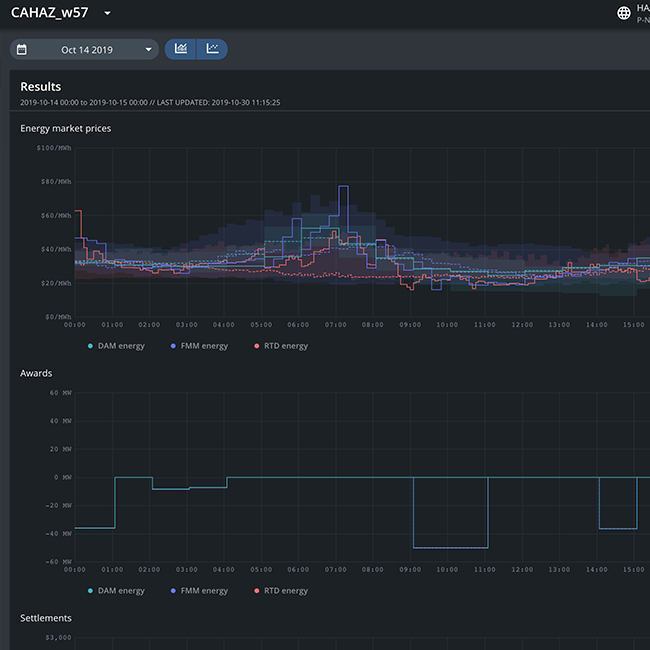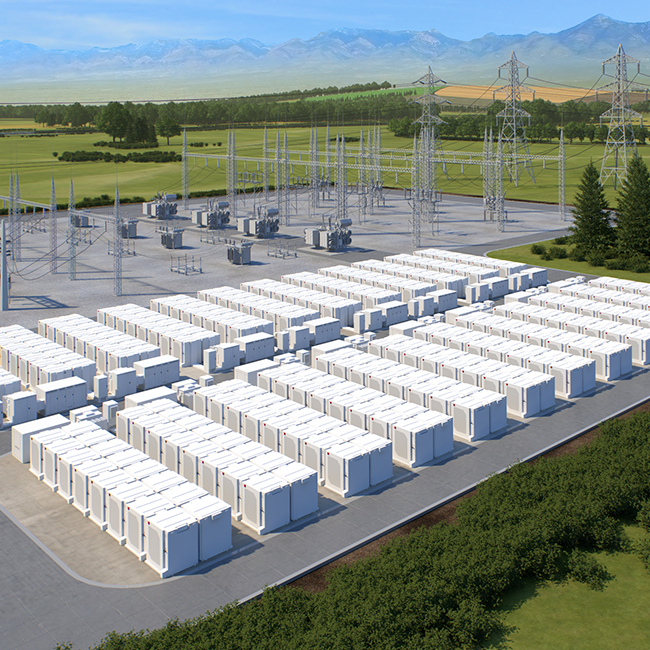This guest article dives into the key points of a study that Fluence recently commissioned to Consentec, a Germany-based consultancy. The study explores how the economics of the 450 MW Grid Booster assets in Germany could be improved if they were allowed to deliver services to the grid operator and energy markets in addition to their primary use case as grid boosters.
Understanding the benefit behind the dual use of battery-based energy storage in grid and market applications
In our first guest article, we outlined the innovative concept and operational model of the German Grid Booster projects. The projects are an initiative of the German grid operators TransnetBW and TenneT to build a total of 450 MW of Storage-as-Transmission Assets (SATA) to increase the utilization of transmission lines in Germany and thereby reduce grid congestion cost. Projects like the German Grid Boosters are underway in Spain, Australia, Chile, and the United States.
SATA are often not used 100% of the time in their primary function. In the case of the Grid Booster energy storage systems in Germany, they will be used in their primary use case during times of grid congestion and be on stand-by the rest of the time.
A debate has been ongoing for some time on how energy storage could technically, economically, and regulatorily provide additional value to the grid as so-called “dual-use” assets and combine rate-based revenues as SATA with market-based revenues as a storage asset that trades on wholesale and other energy markets. In the US, the Federal Energy Regulatory Commission (FERC) dealt with this topic in 2017 and published in its policy statement (PL17-02) on Utilization of Electric Storage Resources for Multiple Services When Receiving Cost-Based Rate Recovery potential pathways for dual use of SATA.
In a study commissioned by Fluence to Consentec, we evaluate this topic on the actual market environment of the German Grid Booster assets. In this evaluation, we consider that the provision of an additional service can only be incremental and hence not impact the ability of the asset to serve its primary functionality as a Grid Booster asset.
Providing Additional Services to the Power Grid
As a first step, it is important to understand what additional services can be provided by SATA to the primary Grid Booster functionality. The first group of considered services belong in the area of system operation, or more precisely, non-frequency ancillary services. They include:
- Reactive power
- Short circuit current
- Inertia
- Network Restoration Services
These non-frequency ancillary services can be provided by Grid Booster assets technically and operationally in parallel to the primary grid booster functionality without impacting it. In the case of reactive power, an oversizing of the inverters of the Grid Boosters is necessary, if the energy storage system should provide active and reactive power with its full capacity simultaneously. For network restoration services, it is important to consider the regular state of charge of the SATA. If the asset is always fully charged, as will be the case with the TransnetBW Grid Booster, the asset will have sufficient energy capacity to provide system restoration services.
Storage assets can also provide market-based services. For Germany, we considered:- Participation in day-ahead spot markets
- Participation in balancing markets for aFRR (a frequency control product in Continental Europe)
As the functionality of energy trading and the provision of frequency regulation conflicts with the primary Grid Booster functionality, we consider that such services could only be provided alternating to the primary functionality of the Grid Booster. Here a mechanism needs to be defined where the SATA is handed over to a third-party market participant for active participation in energy markets, and returned to operational control of the TSO at a pre-defined time and at a predefined state-of-charge.
Economic Value of Dual Use of Grid Booster Assets
The economic value of the services mentioned above is defined either based on their existing market procurement or via the evaluation of an alternative cost for the provision of those services with other technical assets. The values assessed in this study are summarized in table 1, and the complete assessment can be found in the detailed study.
Table 1: Overview of revenue potential in different services
| Service | Economic Potential |
| Reactive Power | 5,000€ MVA/year (assuming a compensation of 0.6€/MVArh) |
| Short Circuit Current | Prices of UK Stability Pathfinder indicate a value of average 4,000€/MVA/year on average and 6,500€ MVA/year as marginal bid |
| Inertia | Currently no market-based procurement in Europe |
| Network Restoration Services | 1,000€/MW/year - bilateral procurement in Germany |
| Day-ahead Energy Spot Market | 14,000€/MW/year |
| Balancing Energy Market - aFRR |
4,500€/MW/year |
Storage assets that operate purely in spot and balancing markets realize profits well above €100k per year, but their business case can not be compared to SATA. The relatively low value for market participation of SATA results from the limited period in which the Grid Boosters can be relieved from their primary function and be placed in wholesale markets. Considering these short “release” periods and relatively long time intervals between gate-closure of day-ahead and balancing service auctions and the physical delivery of those services, Grid Booster assets can only capture parts of the value that fully market-based assets can realize. Additional upside potential could be realized via trading in intraday and continuous intraday markets, but this aspect is not considered in this study.
Figure 1 provides an overview of potential revenue stacking for a dual use of German Grid Booster assets. The annual revenue potential of 6.000€/MW/year for the delivery of non-frequency ancillary services and 14.000€/MW/year for the combination of non-frequency ancillary services and participation in day-ahead spot markets appear low in comparison to revenue stacks of fully-merchant assets. Taking into consideration that the investment costs of Grid Booster assets are fully rate-based following a positive cost-benefit analysis in the grid development plan, the shown revenues are incremental to the already existing business case of Grid Booster assets. They therefore reduce the cost of those assets to grid users.
Figure 1: Estimated Revenue Stack

Figure 1: Estimated revenue stack for hypothetical application of grid booster assets in Germany
Regulatory Practicability of Dual Use of Grid Booster Assets
An important element of understanding how the economics of Grid Booster assets could be improved by the provision of additional services is around regulatory processes for the provision of such services.
As outlined in more detail in the study, the provision of non-frequency ancillary services is likely to be easier to implement. For example, the TransnetBW asset is planned to provide reactive power and the monetary value of this has been estimated at €26m for a 250 MVA capability over 20 years in the German 2030 grid development plan. For other services, such as short-circuit or inertia contribution, the German regulator has recognized the ability of SATA to provide those services, but was unable to value them, as such services are today not procured in Germany. As these services are expected to be procured in future, the regulator will have to define the path of procurement and the role SATA could play.
The provision of market-based services is more complex, as TSOs are not allowed to participate in energy markets. Here a commercial structure would have to be defined in which the TSO hands over operational control for the Grid Booster to a third-party market participant, who could then monetize the value of the energy storage asset. The TSO could receive a predefined PPA rate or a revenue share for realized revenues. Such a commercial structure would have to be defined by the respective regulator.
It's noteworthy that on the EU level, such market structures are already under investigation. In the draft version of the Framework Guideline on Demand Response, the European Union Agency for the Cooperation of Energy Regulators (ACER) outlines a model for shared ownership of storage assets between TSOs and third-party market participants.
Unlocking the Value of Energy Storage as Dual Use Assets
In conclusion, the Improving Project Economics of Grid Booster Batteries study shows that potential approaches to provide additional services from Grid Boosters - combining an operation as a rate-based and market-based asset - can yield significant benefits.
Those additional profits from market participation of the Grid Booster assets would lower costs for consumers. To enable this approach, appropriate commercial and regulatory arrangements would need to be developed.
Even if only services falling under the area of responsibility of TSOs are considered, there is an additional benefit which improves the business case of grid booster assets. This would also justify a wider deployment of such assets and a consideration of their value in future cost-benefit analyses.
Download Consentec’s Reports
Grid Boosters as Innovative Solution to Optimize Power Grids |
Improving Project Economics of Grid Booster Batteries |
About Consentec
Consentec, is a Germany-based boutique consultancy with outstanding knowledge on technical and economic questions in power systems. Congestion management has always been in the focus of Consentec’s work. The original idea for Grid Booster batteries is closely linked to previous work by Consentec for German TSOs and government agencies. Consentec advised the German Ministry on Economic Affairs (now BMWK, formerly BMWi) in the initial discussion process on the Grid Booster concept, including modelling exercises and an initial cost-benefit analysis. Hence, Consentec is deeply familiar with the Grid Booster concepts and related chances and challenges.




















